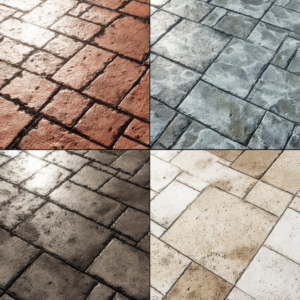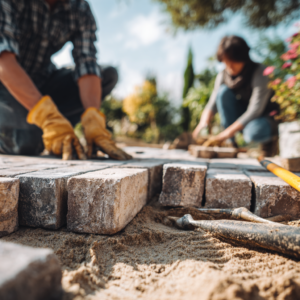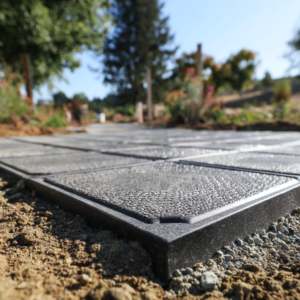Choosing between the right concrete paver styles isn’t just a design decision – it’s an investment in longevity, function, and curb appeal. And believe me: with so many shapes, textures, and finishes available, understanding the differences between each style can make the difference between a space that simply looks good and one that truly feels right.
That’s because outdoor spaces are more than just extensions of our homes – they’re places where we gather, relax, and create memories – and therein lies the beauty of hardscape design.
Whether it’s a sleek driveway or a patio designed for long summer evenings, the foundation of these spaces lies on paving stones, with concrete pavers standing out as one of the most versatile, cost-effective, and stylish solutions for most people.
In this article, I’ll take you through the main styles of concrete pavers, explain where each shines, and share insights I’ve gathered through years of working with them. Whether you’re starting from scratch or looking to upgrade, you’ll leave here with clarity and a lot of inspiration.
You may also like: What’s the size of the largest concrete pavers? Overall benefits
Jump to:
The 4 most famous concrete paver styles to inspire you
Concrete paver styles refer to the various designs, shapes, colors, and finishes of pre‑cast concrete units used to pave driveways, patios, walkways, pool decks, and more. These pavers are molded mixtures of cement, aggregate, sand, and pigments that offer consistent strength, uniform appearance, and design flexibility.
They’re available in multiple shapes like rectangular, square, hexagonal, and cobble formats, as well as permeable and interlocking options. For a better idea, the following concrete pavers are extremely versatile and cost-effective, ideal for both residential and commercial use.
Interlocking Concrete Pavers
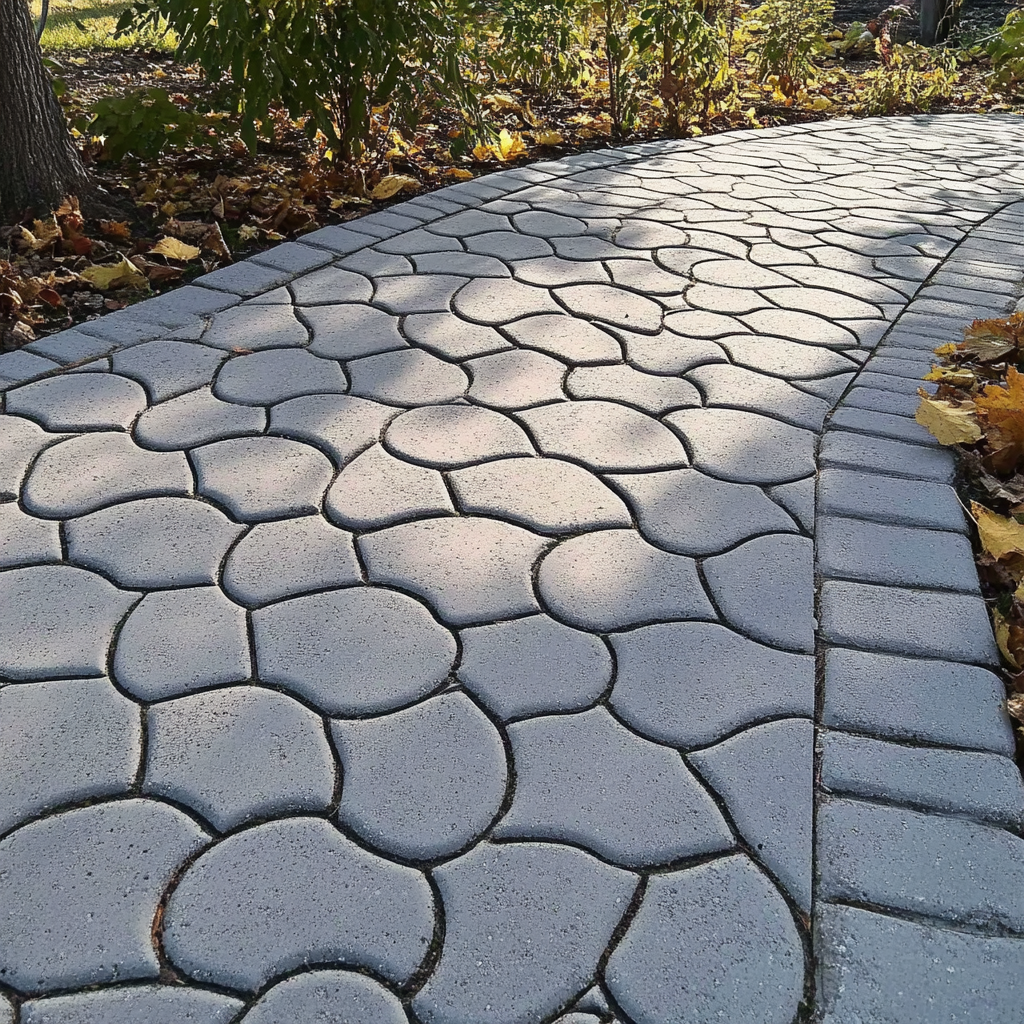
These are designed to fit tightly together with edge contours, creating a strong, stable surface ideal for high-traffic areas including driveways and walkways. Interlocking pavers flex slightly under pressure without cracking, making them more durable than poured concrete.
Architectural Slab or Flat Concrete Pavers
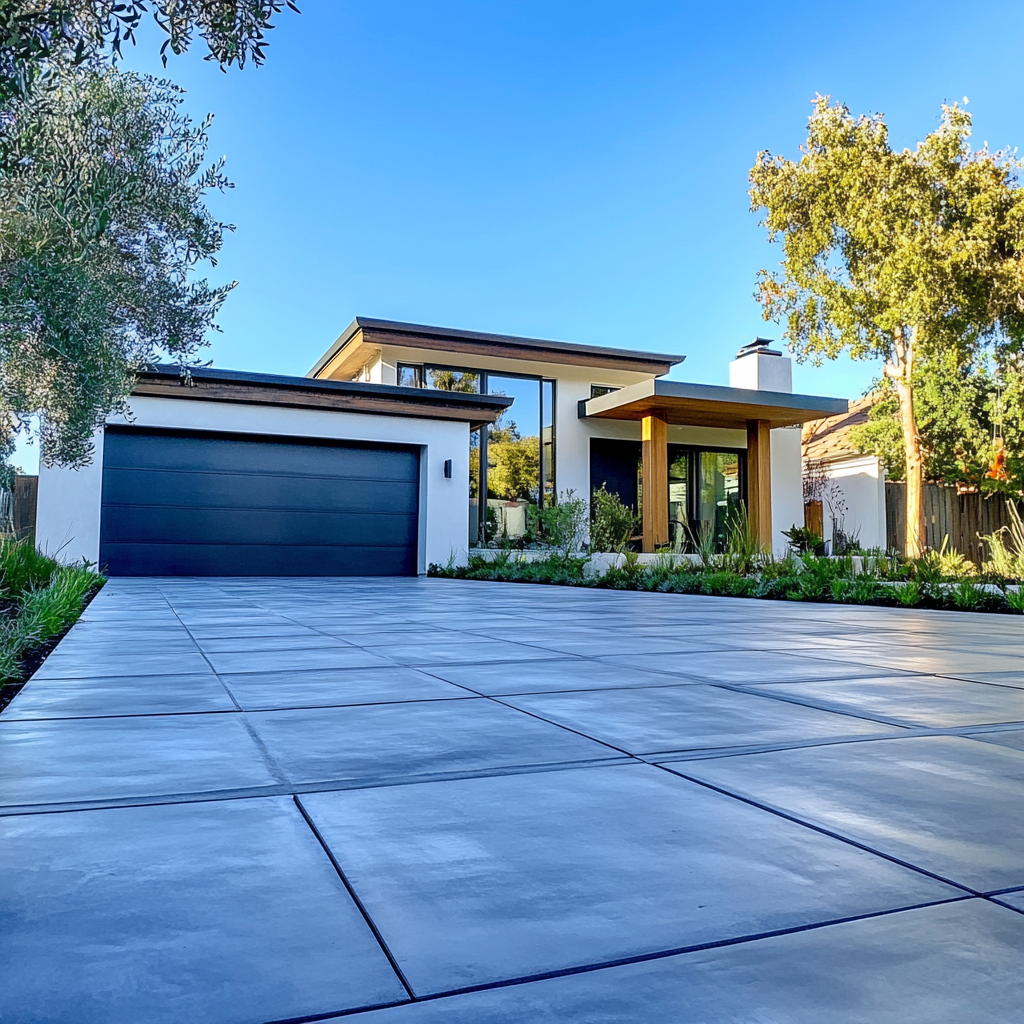
Thinner than interlocking blocks with smooth or textured finishes, these pavers mimic natural stone or large slabs. They’re perfect for patios, pool decks, and decorative areas with foot traffic only.
Hexagonal, Cobble, and Other Modular Shapes

These unique geometric or textured shapes allow creative layouts and visual interest in patios or garden paths. Cobble-style pavers often carry a rustic or European feel, while hexagonal shapes distribute load evenly and suit moderate traffic zones.
Permeable Concrete Pavers
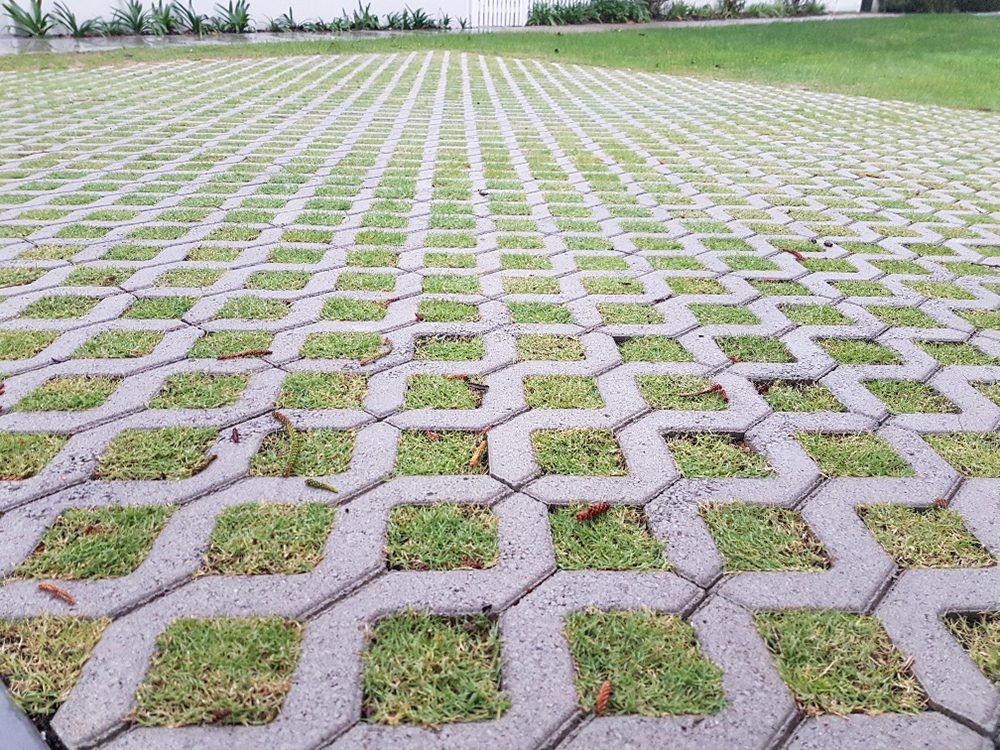
These allow water to pass through gaps or porous surfaces into the ground beneath, reducing runoff and aiding drainage. They’re ideal for eco-conscious projects and areas prone to pooling water.
The many advantages of concrete pavers
Let me begin by saying that concrete pavers are more affordable than natural stone or clay brick, usually costing between US$4 and $10 per square foot for the materials, though installation may range higher depending on complexity. They also last much longer, typically 25 to 50 years with proper care.
Second, they offer high strength and flexibility; most concrete pavers exceed 8,000 psi in compression strength, roughly three times that of poured concrete. They resist cracking under soil movement and freeze-thaw cycles, maintaining structural integrity over time.
Third, concrete pavers offer design flexibility unmatched by large concrete slabs. With options in shape, color, texture, and pattern, it’s possible to create custom layouts, from herringbone bonds to basketweave or mosaic-style patterns that suit any architectural style.
Fourth, maintenance and repair are simple. If a paver is damaged or stained, I can replace just that unit instead of redoing entire sections. Routine sweeping and occasional sealing every few years maintain the appearance and longevity.
Permeable styles add environmental benefit by preventing surface runoff and assisting with stormwater management, a feature many clients appreciate in flood-prone areas.
How to choose the right concrete paver styles for your project
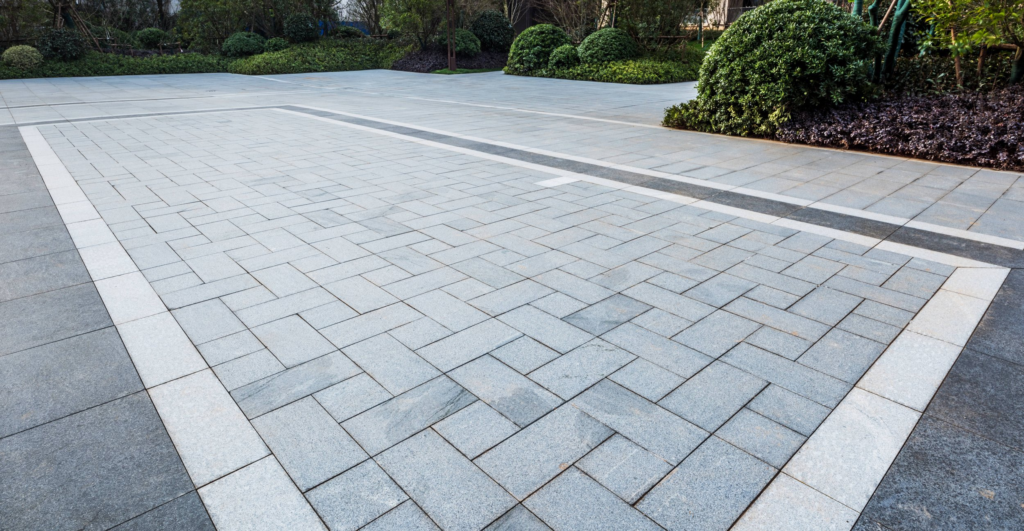
I usually guide clients through three key considerations: purpose of the space, visual goals, and environmental factors. See a little bit more of this logic down below:
Intended Use and Load
For driveways or areas with vehicle traffic, I recommend interlocking concrete pavers designed for heavy loads. For walkways, patios, or pool decks, lighter flat slab styles or decorative shapes work beautifully without compromising strength.
Design Preferences
If you prefer a clean and modern aesthetic, I might suggest large-format rectangular or square architectural pavers in gray or earth tones. For more rustic charm, I use cobble or mixed-color modular styles. Hexagonal shapes or custom layouts offer artistic flair for landscape pathways or terraces.
Drainage and Sustainability
For properties with drainage concerns or a desire to reduce runoff, I offer permeable paver styles. These allow water infiltration and aid ecological goals, while still delivering durability and design flexibility.
Count on JS Brick for professional installation and maintenance!
At the end of the day, proper base preparation and edge restraint are the key to a successful installation; it doesn’t matter which concrete paver styles you choose.
For that, I always excavate to reach firm soil, install a compacted stone base (6 inches for pathways, up to 12 inches for heavy-duty) – just like explained here – and then add a screeded bedding layer of sand before laying the pavers. Edge restraints protect the layout from shifting and ensure cohesion over time.
Once the pavers are laid in the chosen pattern, I use a plate compactor to lock them into the sand base. Polymeric sand comes afterward, when I compact again and rinse as recommended.
As someone deeply connected to the hardscape industry, I trust concrete pavers as an ideal solution to transform outdoor areas because they offer the best balance of affordability, design flexibility, durability, and functionality – whether one’s looking for a sleek modern patio, a durable driveway, or a decorative garden path. So, how about seeing their appeal firsthand?
If you happen to be around Sarasota County, in FL, you can always reach out to us here at JS Brick. We can not only help you choose the best concrete paver styles for your project but also undertake the entire installation process from the ground up, alleviating you from potential mistakes and lack of experience.

